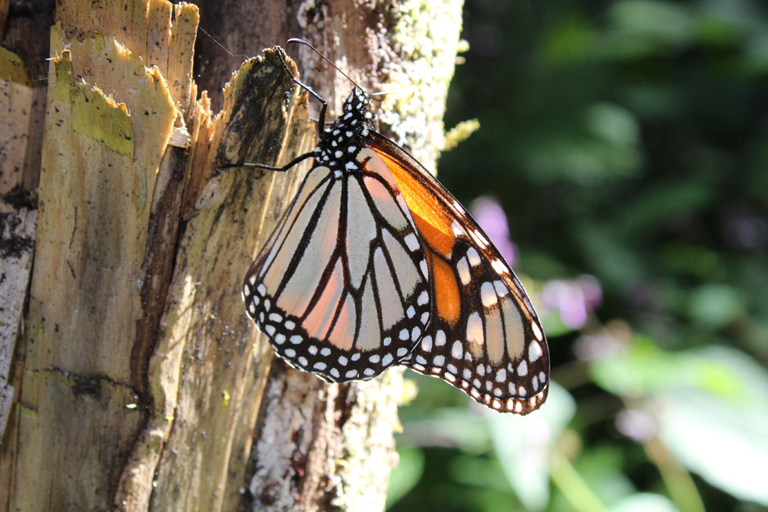- The number of monarch butterflies wintering in Mexico is down by more than half this year, according to new survey results.
- The area of forest inhabited by monarchs in Mexican forests is used as a proxy for estimating the monarch butterfly population. The survey found that the area of forest occupied by monarch butterflies during the 2019-2020 winter season was just 7 acres (2.83 hectares), a 53% decrease from the 2018-2019 season, when monarchs covered 15 acres (6.05 hectares) of forest.
- In a statement, Jorge Rickards, the managing director of WWF-Mexico, said that the decline in the monarch butterfly population wintering in Mexico is not necessarily a cause for alarm, but added that “we must remain vigilant and not allow it to become a trend in the coming years. Conservation is a long-term job.”
The number of monarch butterflies wintering in Mexico is down by more than half this year, according to new survey results.
The National Commission of Protected Natural Areas of Mexico, together with WWF-Mexico, local communities, and other partners, conducts a survey every year to document the extent of forest habitat covered by monarch butterflies that migrate from the US and Canada. The area of forest inhabited by monarchs in Mexican forests is used as a proxy for estimating the monarch butterfly population.
The survey found that the area of forest occupied by monarch butterflies during the 2019-2020 winter season was just 7 acres (2.83 hectares), a 53% decrease from the 2018-2019 season, when monarchs covered 15 acres (6.05 hectares) of forest.
In a statement, Jorge Rickards, the managing director of WWF-Mexico, said that the decline in the monarch butterfly population wintering in Mexico is not necessarily a cause for alarm, but added that “we must remain vigilant and not allow it to become a trend in the coming years. Conservation is a long-term job.”

WWF reports that when migrating monarchs arrived in Southern Texas in March and April 2019, they were met with lower temperatures than normal, which impeded the growth of eggs and larvae. That meant that there were fewer butterflies to produce succeeding generations of monarchs, causing a smaller population to occupy a smaller area of Mexico’s forests.
“The latest forest report indicates the hibernation habitat is in good condition, with a very low illegal logging rate,” Rickards said. “We are committed to continuing to work with everyone involved to help the species, its habitat and the local communities that depend on it.”
See related news from California: Western monarch butterfly numbers critically low for second straight year
The survey discovered 11 colonies of monarchs: Five colonies covering 6.08 acres (2.46 hectares) of forest were found inside of the Monarch Butterfly Biosphere Reserve (MBBR), which stretches across a mountainous area between the state of Michoacán and the State of Mexico, while 6 additional colonies occupying 0.91 acres (0.37 hectares) were found outside of the reserve.

The monarch migration is an annual spectacle that brings thousands of tourists to the MBBR annually. But fewer and fewer monarchs are wintering in Mexico every year as extreme weather, deforestation, and herbicide use reduce their populations in North America. One of the main threats is the disappearance throughout the United States of milkweed, the only plant on which female monarchs lay eggs and which monarch larvae exclusively eat. Research has also shown that some monarchs are finding other places to spend their winters, possibly giving up their migratory ways altogether and joining resident populations of monarchs that spend the entire year in one region. The butterflies that do continue to migrate face additional threats when they reach their wintering grounds in Mexico.
“Mexico, like Canada and the United States, see the monarch’s migratory journey as one of the most amazing phenomena of the animal kingdom,” Eduardo Rendon-Salinas, Terrestrial Ecosystems Deputy Director at WWF-Mexico, said in a statement.
“Preserving this journey means promoting new ways people can get involved and keeping up our guard in the face of threats such as climate change and forest degradation. We all can help by planting nectar plants from which butterflies can feed and obtain enough energy to continue their journey throughout North America. Plants like native Milkweed in the United States and Canada are essential for the monarch reproduction.”


FEEDBACK: Use this form to send a message to the author of this post. If you want to post a public comment, you can do that at the bottom of the page.
